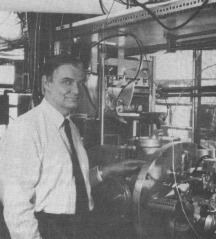Citizenship Canadian Alma mater Laval University | Name Paul Marmet Spouse Jacqueline Marmet | |
 | ||
Institutions Professor of Physics, Universite LavalDirector, Laboratory for Atomic and Molecular Physics, Universite LavalSenior Researcher, Herzberg Institute of Astrophysics, National Research Council (Canada)Assistant Professor of Physics, University of Ottawa Known for Low-energy Monoenergetic Electron Spectrometer Notable awards Herzberg Medal of the Canadian Association of PhysicistsLeo Pariseau Prize of the French Canadian Association for the Advancement of Science(ACFAS)Service Award, Royal Astronomical Society of CanadaOfficer, Order of Canada Died May 20, 2005, Ottawa, Canada Books Absurdities in Modern Physics: A Solution Or: a Rational Interpretation of Modern Physics | ||
Paul Marmet; (20 May 1932 – 20 May 2005) was a Canadian physicist and professor, best known for developing, along with his mentor Larkin Kerwin, a high resolution electron selector for the study of electronic states of negative ions. This instrument, along with a mass spectrometer he developed, was widely used by scientists for electron scattering studies which led to the discovery of enhanced vibrational excitation in nitrogen, and for the study of free radicals.
Contents
Career
Beginning in 1967 Marmet served as director of the laboratory for Atomic and Molecular Physics at Laval University in Quebec City, Canada, serving in that role until 1982. From 1983 to 1990, Marmet was a senior researcher at the Herzberg Institute of Astrophysics of the National Research Council of Canada in Ottawa. In 1990 Marmet was an Assistant Professor of Physics at the University of Ottawa.
Opposition to Quantum Mechanics, Relativity, and the Big Bang
In his later years Marmet was an outspoken critic of the Copenhagen Interpretation of Quantum Mechanics, the theory of relativity, and the Big Bang cosmological model. In 1993 he self-published a book entitled "Absurdities in Modern Physics". He also maintained a web site devoted to his ideas. His views have not found acceptance within the mainstream scientific community.
